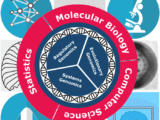
Enhancing Scientific Writing: Implementing a Literature Review Project in Undergraduate Biochemistry Courses
October 11, 2024In academic research, literature reviews serve as the foundational step that provides a comprehensive understanding of previous work, allowing for the generation of new hypotheses and ideas. The ability to conduct a scholarly literature review is an essential skill for students in various fields, particularly in science, technology, engineering, and mathematics (STEM). However, teaching students how to write effective literature reviews is a challenge that many instructors face. To address this, an innovative method was introduced in an upper-level undergraduate biochemistry course, allowing students to participate in literature review writing as a collaborative class project. This approach not only provided valuable learning experiences but also produced peer-reviewed publications, highlighting its effectiveness in fostering research skills.
Method and Strategy for Literature Review Writing
The process of conducting a literature review as a class project was carefully structured to ensure both student engagement and success. The authors of the initiative, Hati and Bhattacharyya (2024), emphasize the importance of strategic planning when introducing such projects. The process is divided into four main stages: topic selection, information extraction, group discussions and feedback, and final compilation
Initially, the instructor selects a broad topic relevant to the course material. In the Biochemistry II course, for example, topics such as oxidative stress in COVID-19, the role of vitamin D in preventing severe infection, and the involvement of sulfur-containing amino acids in metabolic processes were explored Groups of students are then assigned to research subtopics within the main theme, ensuring that the workload is distributed and collaboration is encouraged. These subtopics allow students to gain an in-depth understanding of specific areas while contributing to the overall paper.
Weekly discussions and feedback sessions played a critical role in the success of the project. During these meetings, students received constructive criticism on their drafts and guidance on research strategies. The use of reference management tools like Mendeley was introduced to help students organize their sources and properly cite their findings. In the final stage, the highest-scoring student in the class compiled the individual contributions into a cohesive manuscript. This collaborative effort allowed students to experience the peer-review process firsthand, culminating in publications in renowned scientific journals.
Benefits of the Collaborative Writing Process
The implementation of this literature review writing project provided numerous advantages for students. First, it exposed students to the collaborative nature of research. Science is not conducted in isolation, and by working in teams, students learned to communicate, delegate tasks, and combine their findings into a well-structured reviewThis experience also broadened students’ perspectives by allowing them to explore how scientific knowledge evolves over time, as well as helping them identify gaps in existing research.
Another important benefit was the development of writing and critical thinking skills. By analyzing, synthesizing, and summarizing research articles, students improved their ability to communicate scientific findings effectively The revision process, guided by regular feedback, helped students refine their writing and gain confidence in presenting their ideas.
Additionally, this approach provided an accessible means of engaging students in research, even in institutions with limited laboratory resources. Conducting literature reviews in a classroom setting is a cost-effective strategy that allows many students to participate in authentic research experiences, which might otherwise be unavailable due to resource constraints.
Challenges and Solutions
While the literature review project had clear benefits, it also posed certain challenges. Engaging students with varying levels of interest and skill was difficult at times. Some students, especially those whose research interests did not align with the chosen topic, struggled to contribute meaningfully. To mitigate this issue, instructors allowed students to choose their research subtopics where possible, ensuring that they felt invested in the project
Another challenge was ensuring that all students adhered to deadlines and produced high-quality work. Strict deadlines and a structured feedback process were implemented to address this. By setting clear expectations for each draft and holding students accountable for their contributions, instructors were able to maintain the quality of the final manuscript
Assessment and Results
The success of this collaborative literature review writing project was evident not only in the final publications but also in the marked improvement in student performance over time. Assessment was based on three drafts: an initial draft, a second revised version, and the final submission. By comparing the first and final drafts, instructors could track students’ progress in areas such as topic focus, knowledge integration, and writing skills. Most students showed significant improvement, with the majority meeting or exceeding the expectations laid out in the course’s learning outcomes
The effectiveness of this project was further validated by the resulting peer-reviewed publications, some of which have been widely cited in the scientific community. For example, a review on the role of oxidative stress in SARS-CoV-2 infection has received over 270 citations to date.This demonstrates the real-world impact that undergraduate students can have when given the opportunity to engage in meaningful research projects.
Conclusion
The integration of a literature review writing project into an upper-level undergraduate biochemistry course proved to be a highly effective pedagogical strategy. By participating in this project, students not only gained valuable research skills but also contributed to the scientific community through peer-reviewed publications. Despite certain challenges, the collaborative nature of the project and the structured feedback process ensured its success. As educational institutions continue to seek ways to provide high-impact learning experiences, the literature review writing project stands out as an accessible, scalable, and cost-effective approach to research training in undergraduate education.
References
Hati, S., & Bhattacharyya, S. (2024). Writing a literature review as a class project in an upper‐level undergraduate biochemistry course. Biochemistry and Molecular Biology Education, 52(3), 311–316.

















